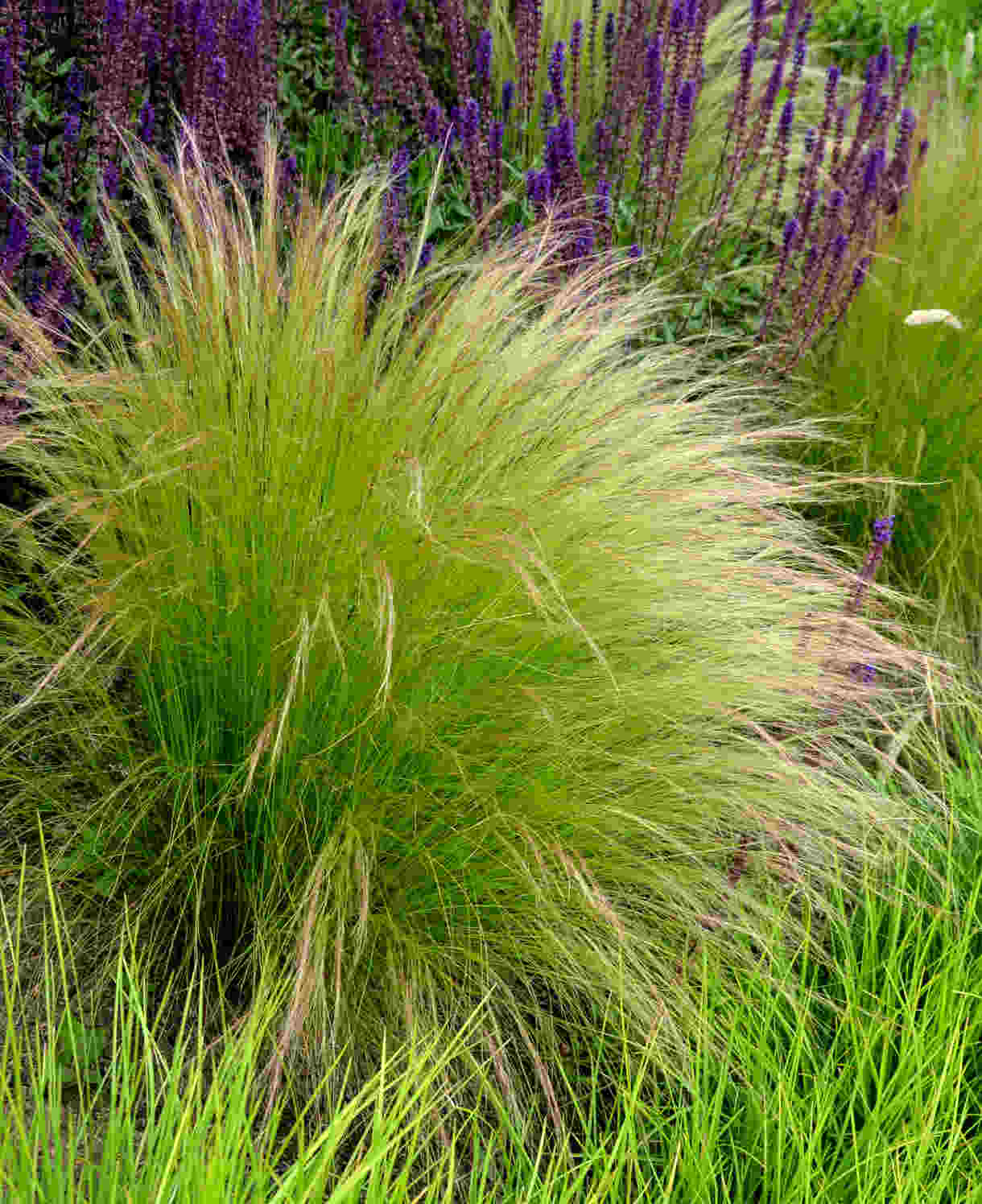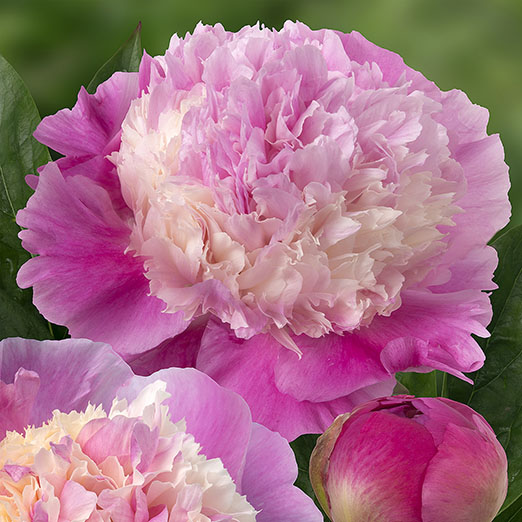How to grow Linaria
Also known as toadflax, linaria is a genus of around 100 species of annual, biennial, and perennial plants known for their snapdragon-like blooms which flower over a long period. Of these, UK gardeners are likely to be familiar with two key species. Linaria purpurea is a popular garden perennial prized for its spires of delicate flowers and ability to naturalise freely. There are several cultivated forms; the pale pink ‘Canon Went’ is perhaps the best known, though ‘Dial Park’, ‘Peachy’, and Springside White’ are growing in popularity. L. purpurea is native to Italy, though a propensity to self-seed means it has become a common sight in many other parts of the world.
L. vulgaris is a UK native perennial wildflower often seen in sunny, open sites such as verges, banks, and meadows. It bears spikes of pale yellow flowers with a darker orange-yellow centre, leading to the common name of ‘butter and eggs’.
The name ‘toadflax’ may also bring to mind ivy-leaved toadflax, the delicate, creeping perennial often seen forming dense mats in cracks, walls, and pavements with its small, lobed leaves and purple flowers. Though once a member of the linaria genus, it has long been classed as Cymbalaria muralis, and while widespread and ‘weedy’ in behaviour it is not actually native to the UK, but rocky places in southern Europe. It is thought to have been introduced here as a garden plant several hundred years ago, before making its escape into the wild.

Zantedeschia is a genus of flowering plants from the family Araceae and is native to southern Africa. With a rich history dating back to the Ancient Romans, these deciduous or semi-evergreen perennials have been used as a symbol of celebration. Zantedeschia was Named after Professor Giovanni Zantedeschia, an Italian botanist.
There are two main forms of Zantedeschia: hardy and tender. Hardy forms of the plant can be grown outdoors, enjoy moist soil and full sun or partially shaded conditions - these are known as Arum lilies. Tender forms of Zantedeschia prefer being grown in containers or pots and should be brought inside over the winter - these are known as Calla lilies.
With tuberous flora in all colours from whites, yellows and oranges to deep reds and purples, Zantedeschias are not to be overlooked in any garden, as long as they have sufficient sunlight to grow in.
Ready to learn more about growing Zantedeschia? Read on for all there is to know...

Key Information
Soil pH
Position
Hardiness


Where & when to plant Linaria
Position - Full sun
Soil - Light and well-drained, preferably sandy
Flowering Period - Spring to autumn
Hardiness - Hardy, usually rated H5 (-10 to -15°C), or H6 (-15 to -20°C)
For best results, plant linaria in autumn or spring. An autumn planting can be done by those gardening in mild conditions (and broadly speaking, this is the southern half of the UK). For those liable to cold, wet winters, it is best to wait until spring (generally the northern half of the UK, or those with very heavy soil). Planting can also be carried out in summer, though be prepared to water regularly.
Taller species of linaria such as L. purpurea and L. vulgaris are suitable for weaving throughout a border, or naturalising in stony soil, gravel garden, or dry-ish meadow. Self-seeding freely, linaria one of those plants which ‘gardens itself’, and is ideal for a wild, low maintenance planting scheme. Cultivated forms such as ‘Canon Went’ will come true (i.e., when the offspring looks the same as the parent plant) as long as they are not grown in the vicinity of the straight species.
Linaria may also be grown in a container.
How to plant Linaria
For planting in the garden, dig the soil area removing any large stones and weeds and breaking up any lumps. Mix in a little organic matter if you have it, such as manure or garden compost. Rake level and firm with your heels. Rake level again.
Water plants well and allow to drain before planting.
Dig a hole twice the size of the root-ball.
Place the plant in the hole, ensuring the top of the root ball sits level with the surface of the soil. Too low and the plant may rot, too high and the roots can dry out.
Backfill with soil and firm in gently with your foot.
Soak well with water.
Mulch around the base with well-rotted organic matter.
For planting in a container, first choose an appropriately sized pot. You may wish to grow your linaria on its own, in which case go for a pot just a few centimetres larger than the rootball, or as part of a larger, mixed container. Always ensure there are plenty of drainage holes in the bottom.
If you are using a heavy pot, it can be a good idea to fill and plant it in situ to save yourself the trouble of moving once full.
Use a good quality potting compost with plenty of horticultural grit mixed in, and, if not already present in the compost (check the description on the bag) some slow-release fertiliser granules.
Start by partially filling the pot with compost; enough so that when placed on it the upper surface of the root ball is about 3cm lower than the top of the pot.
Infill all the space surrounding the root ball with compost, firming down with your fingers then adding a little more so the plant is held tight.
Pick up the container and lightly tap on the potting bench or ground a few times to help further settle the compost around the plant.
Soak well with water.
A mulch with horticultural grit will look attractive and help to prevent a ‘cap’ or crust forming on the top of the compost (something container plants can suffer due to the artificial nature of their watering).

What to plant with Linaria
Linaria is equally at home in a neat, formal rose border as it is in a tumbledown cottage scheme. We love to combine it with other keen self-seeders such as Verbena bonariensis, aquilegia, Erigeron karvinskianus, Stipa tenuissima, Alchemilla mollis, digitalis, and eryngium. Plant this gang once and, provided they’re happy with the conditions, they will do the rest. A garden bursting with life from every nook and cranny awaits!



How to care for Linaria
Pruning and Deadheading
If you wish to prevent the enthusiastic self-seeding for which linaria is known, deadhead spent flowers before seedheads have a chance to ripen. Cutting stems just below the flower cluster can result in new flowering side stems.
If you’re happy to allow seeding, spent flowers may be left intact; the bare seedheads offer attractive winter interest for many months. Cut back in spring just before new growth starts.
Individual linaria plants tend to be fairly short-lived, becoming woody and scrawny after two or three years. Simply remove and, if you have allowed seeding to occur, let the many offspring take the place of the parent plant.
Watering
Soak newly planted linaria a handful of times during its first couple of months in the ground. After this, it is drought tolerant and should be self-sufficient in all but the most prolonged periods of hot, dry weather.
If you are growing linaria in a container, remember these have less access to moisture so will need regular watering throughout the growing season. Allowing the top couple of centimetres of compost to dry out in between is a useful rule of thumb to avoid overdoing it. From mid-autumn, the British climate tends to take over watering needs, though do remember to step in in the event of an unseasonably dry spell.
Feeding
Linaria is not a hungry plant, and in reasonable garden soil a mulch of well-rotted organic matter (i.e., a layer of leaf mould, manure, or garden compost applied to the soil around the plant) should provide more than enough nutrients. This has the added benefit of suppressing weeds and locking in moisture. Mulch when planting, and then again each spring.
Container-grown plants are different as they rely solely on the gardener for nutrition. Get off to a flying start by making sure you use a good quality compost with slow-release granules mixed in. These generally provide nutrients for around 6 to 8 weeks, after which you’ll need to apply a balanced liquid feed once a month until the end of the growing season.
Cold Protection
Linaria is hardy and able to withstand a UK winter without the need for additional protection.
Pests and Diseases
Linaria can be susceptible to powdery mildew, particularly if grown in excessively damp conditions. Remove and dispose of any affected plant material as soon as possible, and, if necessary, thin out surrounding plants to improve air flow.
Another potential issue is aphids. As always, our advice is that these are part of a balanced garden ecosystem and the best approach is to leave them to their natural predators (e.g. birds, ladybirds, and wasps). When numbers are so large, however, that their feeding starts to inhibit and disfigure growth, you may feel it necessary to act. Regularly blasting off with a hose or wiping away with a cloth or piece of kitchen paper can help to keep numbers down without harming other insects.
How to propagate Linaria
Such is linaria’s propensity to self-seed, it is usually a case of thinning out an excess of new plants rather than needing more. However, if you grow more than one cultivar and want to be sure of creating offspring true to a parent plant, division in spring is recommended.
1. Choose a day when the soil is not frozen or waterlogged.
2. Dig the plant out of the ground.
3. Shake off any excess soil.
4. Separate the plant into sections using either swift, cutting blows with a sharp spade, or two forks inserted back-to-back with tines touching, handles then pushed together to prise the plant apart.
5. Discard old, damaged, or surplus pieces, keeping healthy, vigorous material.
6. Replant decent-sized pieces where desired, and any smaller bits can be potted up.
7. Water well until fully established.
* Many plants carry Plant Breeders Rights and cannot be propagated for commercial purposes.
Common Linaria Questions
Does Linaria come back every year/ is linaria a perennial?
This depends on the species, though those most commonly found in UK gardens are perennial, meaning they die back for winter and reappear in spring. When allowed to self-seed, numbers can be expected to increase each year.
Is Linaria poisonous to dogs?
Linaria has no toxic effects reported.
How tall does Linaria grow?
L. purpurea and its cultivated forms tends to reach between 80 centimetres and 1.2 metres in height.
The native wildflower L. vulgaris grows to between 30-90 centimetres depending on the growing conditions.
Why is it called toadflax?
Linaria means ‘resembling linum’, aka flax – an unrelated wildflower with similarly narrow foliage. We’re not sure where toads come into it!





